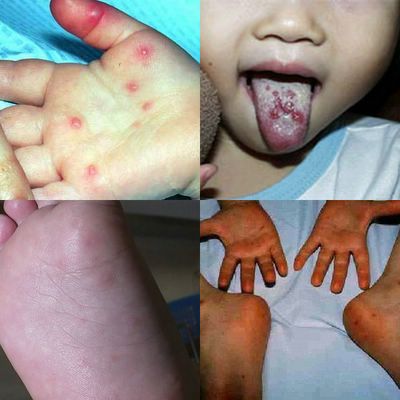HFMD
HFMD is an illness caused by intestinal viruses, commonest being Coxsackie virus and Enterovirus 71. A person with HFMD usually presents with the following symptoms:
- Fever for 2-3 days
- Sore throat and runny nose
- Rash (flat or raised red spots, some with blisters) on palms of hands, soles of feet, or buttocks
- Mouth ulcers
- Poor appetite
- Vomiting and diarrhoea
- Tiredness and weakness ("feeling sick")
HFMD is spread from person to person by direct contact with the nasal discharge, saliva, faeces and fluid from the rash of an infected person and indirectly by contaminated articles. A person is most contagious during the first week of the illness.
HFMD is usually mild and self-limiting. No specific treatment is available, however, treatment can be given to relieve the symptoms of the disease. There is no vaccine for the prevention or treatment of HFMD.
Parents are advised to consult a doctor early if their child has symptoms of HFMD.
They should also be alert to any change in their child's normal behaviour, eg irritation and sleepiness. Should they refuse to eat or drink, have persistent vomiting or drowsiness, parents should bring their child immediately to the A&E Departments of either NUH or KKH, whichever is closer to their home.
Children infected with HFMD should:- Stay at home and avoid contact with other children until they have recovered;
- Not swim until 6 weeks after the onset of illness;
- Remain away from school until their fever has subsided and they must be certified free from HFMD infection by a registered medical practitioner prior to returning to school.
Children should be kept away from crowded public places (schools, preschools, play groups, markets, swimming pools, public transport etc.) if they show signs of infection. Family members are advised to adopt the following good personal and environmental hygiene practices:
- Wash hands with soap and running water before eating and after going to the toilet
- Cover mouth and nose when coughing or sneezing
- Maintain good air circulation
- Clean thoroughly the premises and toys or appliances that are handled by the infected child or are contaminated by his/her nasal or oral secretions with 0.5% sodium hypochlorite solution. Sodium hypochorite is the active ingredient in most household bleaches.
(If your bleach contains 5.25% of sodium hypochlorite, you need to dilute one part of your bleach in ten parts of water to get 0.5% sodium hypochlorite solution.) - Do not share eating utensils
Transmission of enterovirus infections is increased by poor hygiene and overcrowded living conditions.


3 Comments:
Those pictures look very scary.Exspecially the mouth ulsers
8:33 PM
we must stay heathly if not we will look like the pictures
3:16 PM
eeeewwww
6:20 PM
Post a Comment
<< Home